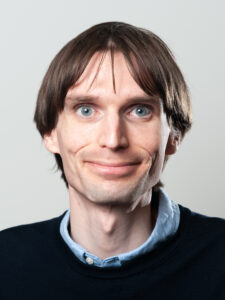
Dr. Ben A. Johnson
Image: Jan Winter / TUM
Tomorrow’s chemical industry must switch to increasingly sustainable and resource efficient Biocatalytic cascades will play an important role here. This refers to chains of successive conversion steps that enable both high yields and particularly complex conversions using biological catalysts, the enzymes. Enzymes usually work under mild and thus resource- and energy-saving conditions. However, they also have a particular disadvantage: they need special molecules to be able to carry out the corresponding reaction steps. However, the large-scale production of these molecules negates the advantages of biocatalytic cascades. Therefore, it is important to regenerate them within the reaction reactor. Such a process can also be facilitated by enzymes, which consume hydrogen as an energy carrier during regeneration. This kind of reaction sequence requires both anaerobic, oxygen-free, and aerobic, oxygen-rich, conditions in one and the same vessel.
Dr. Ben Johnson will investigate whether and to what extent this is possible through a specific reactor or reaction design as part of his Marie Curie Postdoctoral Fellowship “ReLay: Enabling Incompatible Tandem Reactions through Spatial Separation of Reaction Layers”. He is exploring ways to drive biocatalytic reaction cascades with renewable and CO2-free H2. Using continuum modelling, he aims to predict conditions that create spatially separated anaerobic and aerobic domains within a single catalytic particle. This theoretical framework will allow seemingly incompatible O2-sensitive and O2-dependent reactions to proceed together and facilitate the deployment of renewable H2 biotechnology.
